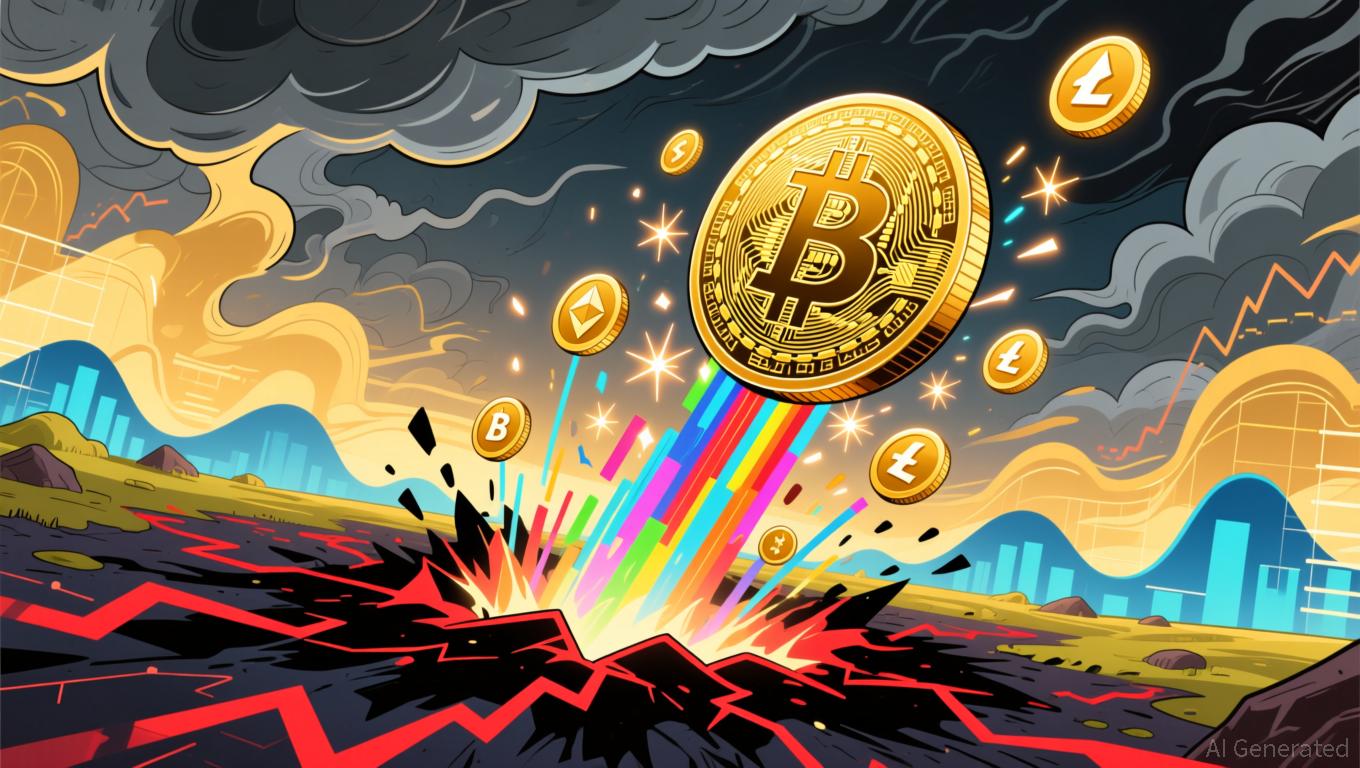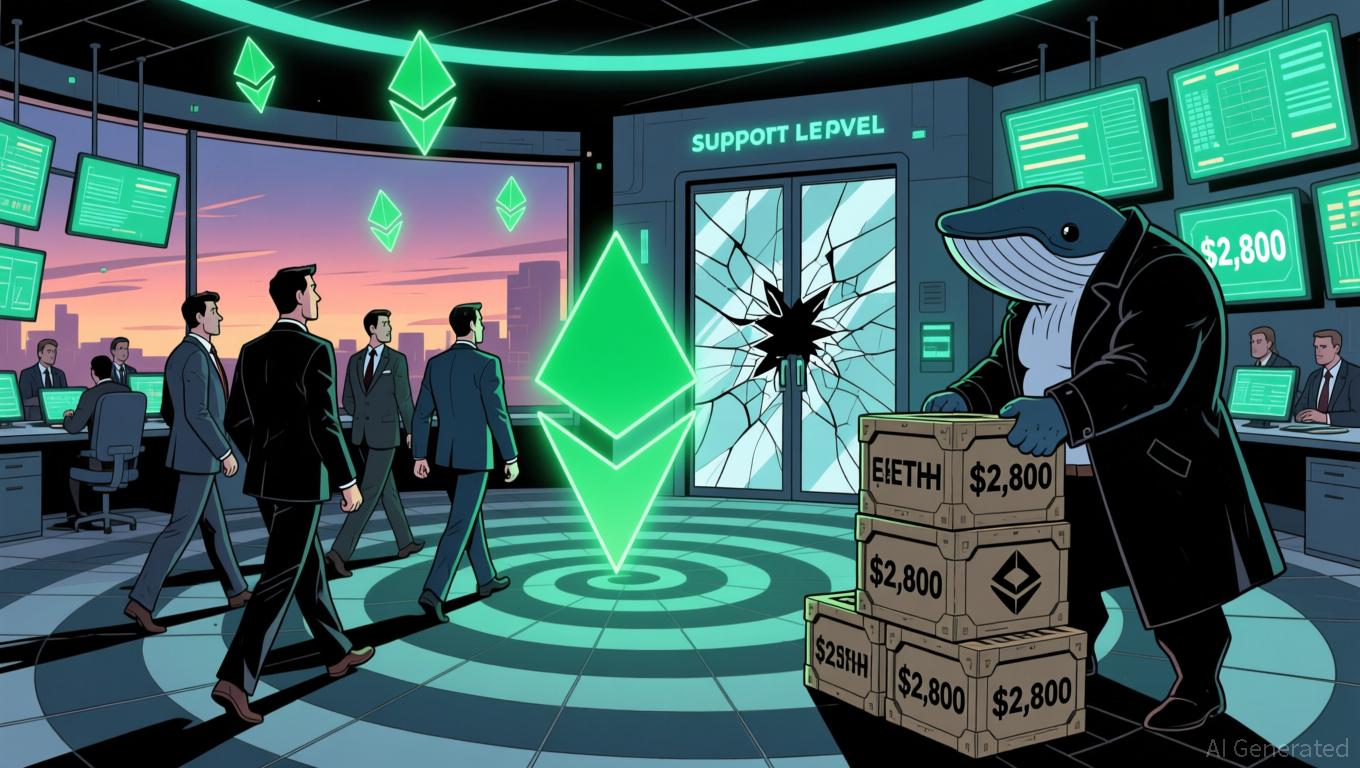Solana's Latest Fluctuations and Systemic Threats in Smart Contract Platforms: An Analysis of DeFi Stability and Weaknesses Following Recent Outages
- Solana's high-throughput blockchain faces systemic risks after a 2024 outage exposed fragility in its single-layer execution model and validator network. - A 64% decline in validators (from 2,500 to 900) raises centralization concerns, though quality improvements and Alpenglow upgrades aim to reduce operational costs. - Price volatility ($100-$1,000 in 2024-2025) reflects conflicting market signals: strong DEX volume vs. technical selling pressure and low investor confidence in upgrades. - Fee inefficien
The February 2024 Outage: Prompting a Rethink
On February 6, 2024, Solana’s network was down for five hours due to a bug in the Agave client’s Just-in-Time compiler. This disruption, which happened during a period of unprecedented activity (with 70 million daily transactions and $143 billion in DEX volume as of October 2025), highlighted the weaknesses of Solana’s single-layer execution approach. While advocates praise Solana’s speed and performance, the outage revealed shortcomings in both client diversity and consensus protocols.

Validator Network Shrinkage: Centralization or Streamlining?
Another pressing issue is the significant drop in Solana’s validator numbers. From a high of 2,500 in early 2023, the count has fallen to below 900 by 2025—a decrease of 64%. Detractors see this as a sign of growing centralization, while supporters argue that the validators who remain are more reliable, with many removed for malicious actions like facilitating sandwich attacks. The Solana Foundation’s move to cut validator subsidies further signals a focus on sustainability over sheer numbers.
This reduction, though, brings up concerns about whether the network can stay decentralized while attracting new validators. The upcoming Alpenglow upgrade, designed to lower validator costs by simplifying consensus, could help by making participation easier. Still, until these improvements are fully in place, the network’s dependence on a smaller, more concentrated validator group could pose risks.
DeFi’s Dilemma: High Throughput Versus Fee Structure
Solana’s single-layer design has allowed it to surpass Ethereum in DEX activity and on-chain earnings. Yet, this same setup has revealed flaws in its priority fee system. During the 2024
Still, these issues point to a larger challenge for DeFi: high throughput alone is not enough if users face unpredictable costs and poor experiences. For Solana to maintain its lead in DeFi, it must ensure its fee model meets the needs of both individual and institutional users.
Price Swings and Market Mood: A Constant Struggle
Solana’s price
Investor sentiment remains wary, as
Looking Forward: Upgrades Amid Uncertainty
Solana’s future plans feature two major upgrades: Firedancer and Alpenglow.
Nevertheless, skepticism in the market remains. While technical upgrades are crucial, they alone may not be enough to rebuild trust. Solana must also prove that its validator network and fee structures can evolve to meet the needs of a growing DeFi sector.
Conclusion: A Test of Endurance
Solana’s recent instability and systemic challenges illustrate the hurdles high-throughput blockchains face. The February 2024 outage and shrinking validator pool have exposed weaknesses that could threaten the network’s DeFi goals if left unaddressed. However, the community’s response—including QoS metrics, Firedancer, and Alpenglow—shows a strong drive for progress.
For those investing in Solana, the central question is whether these upgrades will be sufficient to bring stability to both its price and infrastructure. The outcome will hinge not just on technical achievements, but also on the network’s ability to balance speed, decentralization, and user satisfaction. In the wider DeFi world, Solana’s experience is a clear reminder: scalability is just the beginning, not the solution.
Disclaimer: The content of this article solely reflects the author's opinion and does not represent the platform in any capacity. This article is not intended to serve as a reference for making investment decisions.
You may also like
XRP News Today: "Institutions Show Confidence While Whales Stir Uncertainty: Will XRP Reach $2.60 or Falter?"
- XRP rebounded from $2 support, with analysts targeting $2.60 as a key resistance level within a descending channel. - Institutional adoption grew via new XRP ETFs and Standard Chartered's custodial role, though ETFs hold just 0.5% of XRP's market cap. - Whale selling pressure (200M XRP in 48 hours) and bearish technical indicators below $2.20–$2.52 challenge bullish momentum. - Regulatory uncertainty and unresolved Ripple litigation keep XRP's trajectory dependent on technical execution and macro develop

Unpacking the Rise of MMT Token TGE: Is This a Fresh Driver for Digital Asset Adoption?
- Momentum (MMT) Token's 2025 TGE triggered extreme volatility, surging to $4.47 before an 86.6% drop, exposing speculative market fragility and centralized ownership risks. - Institutional backing (Coinbase, Circle , OKX) and $600M TVL support MMT's DeFi role through RWA tokenization and CLMM liquidity models, despite structural volatility challenges. - 2025 macroeconomic tailwinds (rate cuts, inflation hedging) and regulatory clarity (CLARITY Act, MiCA 2.0) enhance institutional trust, aligning with cryp

Bitcoin Updates: Federal Reserve's Softer Stance and ETF Investments Drive Bitcoin's Recovery to $91,000
- Bitcoin surged above $91,000 in December 2025 as Fed rate-cut odds hit 70%, driven by dovish signals and ETF inflows reversing outflows. - Technical indicators showed oversold RSI levels and seller exhaustion, while altcoins like XRP/ZEC jumped 7.7%-17% amid $2.95T market cap growth. - Institutional flows favored Solana ETFs and altcoin products, but MSCI's crypto exclusion policy sparked backlash from advocates like Michael Saylor. - Retail fear metrics and $605M liquidations highlighted fragility, yet

Ethereum Updates Today: Institutional Investments Rise While Prices Remain Flat: The Challenge of Ethereum's Potential Breakout
- Ethereum's MVRV Z-Score (0.29) signals potential buying opportunities amid prolonged accumulation and institutional ETF inflows. - Retail investors reduced exposure while whales (10K+ ETH) accumulated, contrasting with $92M ETH ETF inflows on Nov 24. - BlackRock's staked ETH ETF filing threatens DATs' opaque fee models as ETH price struggles to reclaim $2,800 despite technical buildup. - Divergent ETF flows ($88M ETHA inflow vs. $53M outflow) highlight market volatility, with analysts eyeing $9K breakout
